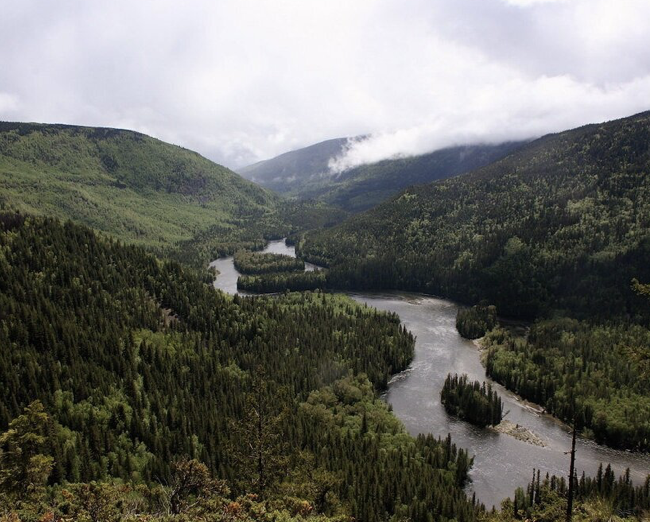
The Nez Perce - Clearwater Forest Plan
Learn more about the recent plan from the U.S. Forest Service and why IRU is objecting.
BACKGROUND: The Nez Perce-Clearwater National Forest of North Central Idaho is home to vast expanses of wild forest, free-flowing rivers, and important habitat for fish and wildlife. This four million acre area of Idaho includes the rivers of the Clearwater basin, and a portion of the Salmon River watershed. The rivers and streams of the forests provide incredible recreational opportunities for paddlers and anglers, and also host critical habitat for Endangered Species Act-listed steelhead, Chinook salmon, and bull trout.
On November 28th, the Nez-Perce Clearwater National Forest (NPCNF) released its long-anticipated Final Environmental Impact Statement and Draft Record of Decision (FEIS/DROD) for their updated Land Management Plan. Here are our main concerns:
The new Forest Plan calls to reduce important riparian buffer zones dramatically
The Pacific Anadromous Fish Strategy (PacFish) and the Inland Native Fish Strategy (InFish) guidelines, published in 1995, established a 300-foot riparian buffer around critical habitat. These guidelines limited forest management activities in this zone to those that explicitly benefited riparian habitat services.
Under the revised plan, the Forest Service is attempting to lower the burden of proof for a wide array of vegetative management or timber harvest in riparian areas. Specifically, it allows for extractive timber harvest activities beyond those solely designed to restore and enhance aquatic and riparian-associated resources; the plan opens the door for such activities to occur, with fuel loading and silvicultural desired conditions in mind, as near as 150 feet away from fish-bearing streams. In doing so, the plan effectively shrinks the riparian buffer established under PacFish and InFish direction and does not afford adequate protection to ESA-listed aquatic species or their habitat.
It is clearly stated that the outcome of the presented Plan and programmatic action are “Likely to Adversely Affect Bull Trout and their Critical Habitat; Snake River Steelhead and their Critical Habitat; Snake River Spring/Summer Chinook Salmon and their Critical Habitat; and Snake River Fall Chinook Salmon and their Critical Habitat”. While the FEIS analysis attempts to reduce the impact of these findings on individuals, changes in management in the riparian zone and the subsequent degradation that is possible will likely be felt at a population level for ESA-listed salmonids in the Forest that are already in danger of extirpation.
An unprecedented attack on Wild and Scenic River protections
Part of any Forest Plan revision is the assessment of eligibility under the Wild and Scenic Rivers Act for all rivers within the Forest’s boundaries. Through this process, 88 streams were found to be free-flowing and possess one or more outstandingly remarkable value (ORVs), making them eligible for inclusion in the National Wild and Scenic Rivers System. This initial assessment of eligibility would have greatly increased the number of recognized sections from the previous 1987 plan which only determined 29 sections as eligible.
The 2012 Planning rule which governs Forest Plan revisions only required eligibility findings during the revision of land management plans. However, the Forest Service opted to take an additional step to conduct additional analysis to determine suitability. While eligibility is clearly defined within the Wild and Scenic Rivers Act, suitability is much more subjective and open to interpretation.
Through this additional analysis, the Forest ultimately decided that only 11 of the initial 88 eligible sections were suitable. Additionally, they opted to render no decision of suitability for the Little North Fork of the Clearwater River which shares an administrative boundary with another National Forest.
As a result, the remaining 76 sections found to not be suitable for inclusion will not receive the interim protections typically afforded to eligible Wild and Scenic Rivers, despite all factors that lead to their initial eligibility remaining intact. This decision represents a stark departure from forest plan revision norms and is an unprecedented attempt to undermine the Wild and Scenic Rivers Act.
Update: In the spring of 2024, Idaho Rivers United and our partner organizations submitted formal objections to the revised plan and participated in subsequent objection hearings with Forest Service staff. We anticipate the Forest Service to release their response to submitted objections sometime this fall. At that time, we will see how the Forest Service plans to respond to the issues raised in our objection letters.
Watch our most recent River RAT on the Nez-Perce Clearwater Forest Plan:
MORE RESOURCES:
““The Tribe objects to a number of the plan components as vague, incomplete, too broad, and unenforceable and, therefore, is insufficiently protective of aquatic resources on the Forest.”
”




